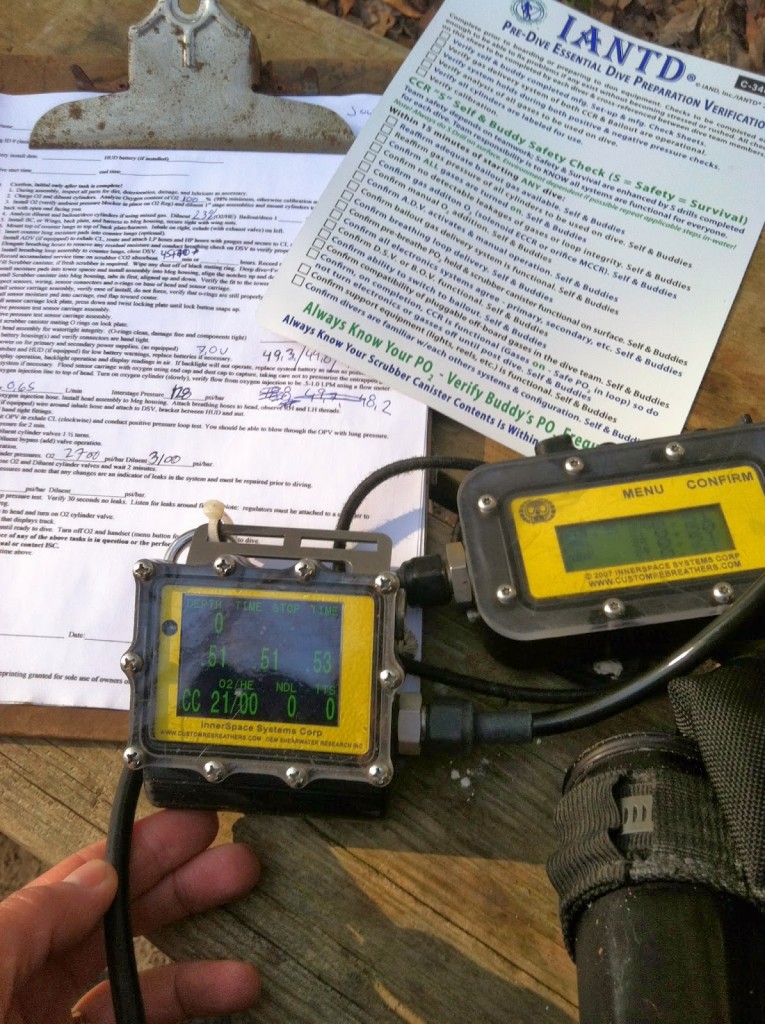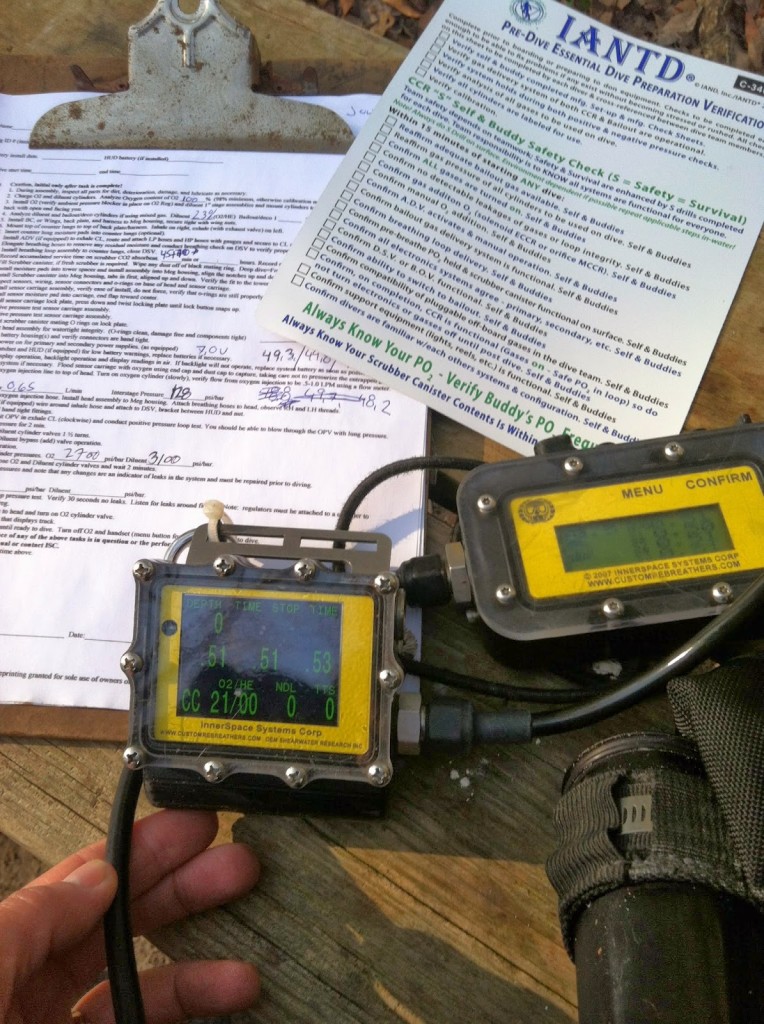A Scuba diver has many responsibilities before jumping in the water. We know that one should be mentally and physically fit, and that the equipment should be set for the “mission”. This is what we learned from our Technical diver water courses. It also means being able to use and reproduce the skills acquired; the rebreather diver’s check list is one of them and part of the solution to reduce CCR divers complacency.
We all know that an airliner pilot who has been flying for years keeps going over basic checklists before take off. So it is one of the main responsibilities for a CCR diver to follow the check list recommended by the manufacturer and by the diving agency.
The IANTD Essentials program work on 4 different control points:
1) Manufacturer’s check list:
Even if seems that some of the points mentioned on the manufacturer’s chek list are redundant, I trust the manufacturer who knows the machine pretty well and there is a reason behind putting a check list together. Let’s just follow it! Megalodon manufacturer has made a detailed pre and post dive check list that helps the Meg diver to control and pinpoint issues before they happen underwater.
2) Agency check list:
Agencies like TDI, IANTD, PADI and probably others have developed a check list for their divers, it is a pedagogical tool that can help the diver detect changes after the manufacturer’s check list is completed.
3) Personal check list.
Just before jumping in the water, I call it a personnel survival check list, everybody is different, and it is important to develop a muscular memory controlling our equipment on land, recheck vital equipment like gas is on!
4) In water-check.
Cave divers have been using these techniques for a long time, Check for leaks and others detectable problems that we can only see in the water.
“In order to sustain training, divers must be able to “do something about something,” or remaining instrumental in their own lives. As divers we must realize that no one else can act on our behalf, and that no one can think for us, practice for us, or react for us. To help us develop a factually-based sense of instrumentality, we will start by devising an outline that draws on individual progress. Our plan of the first steps seems obvious- they are: reflection, motivation, planning, and training. However, the last step,repetition, is often set aside- to the diver’s detriment. Building an initial plan of action around the concepts mentioned above may serve to reduce accidents and increase diver safety”. IANTD Essentials manual Georges Gawinowski
The rebreather diver responsibility is to eliminate problems related to their CCR unit through a methodic practice, and by setting a good example to the community.
Safe CCR diving
Order your IANTD Essentials DVD and manual
List of the IANTD Essentials Instructor






